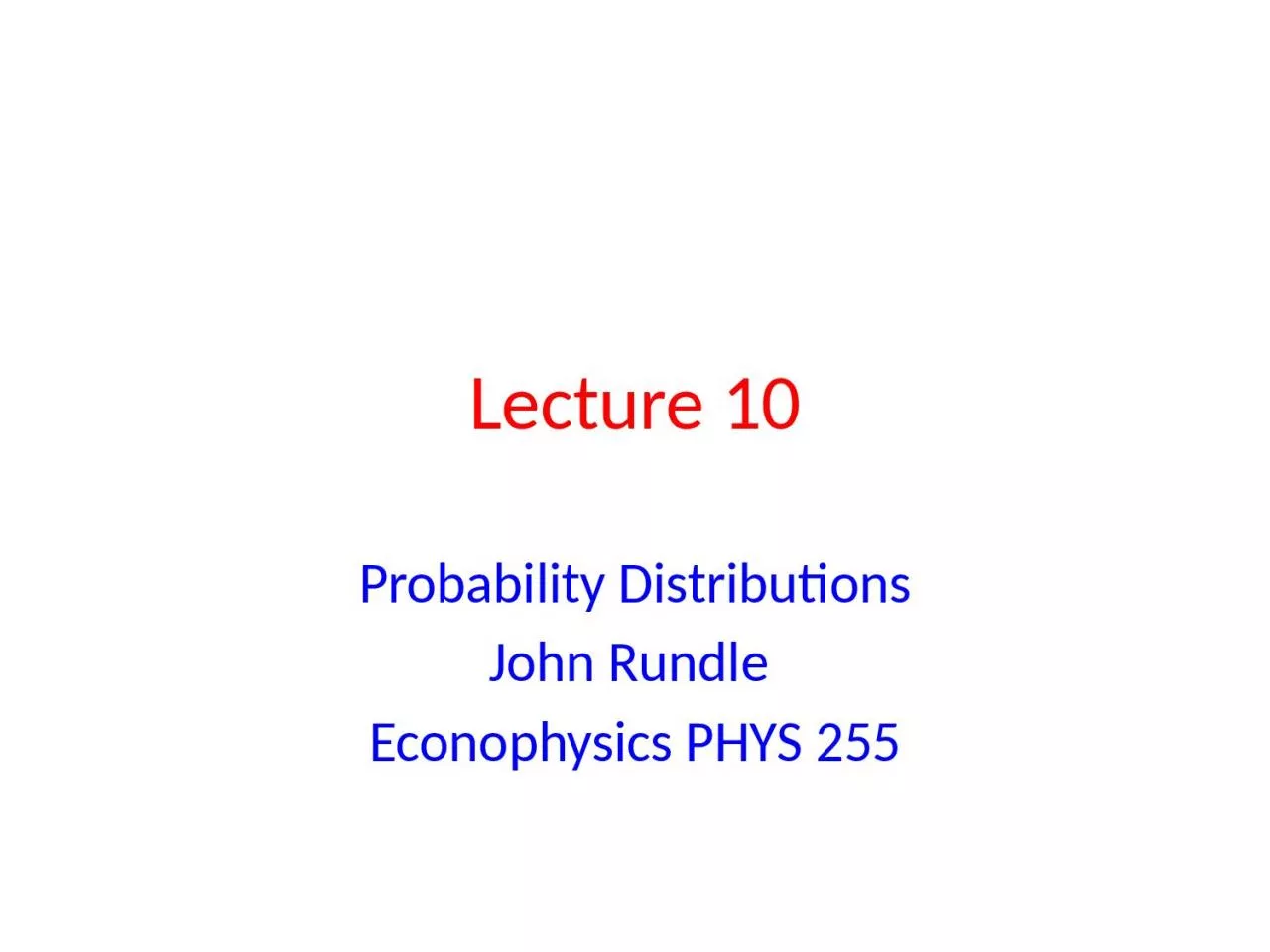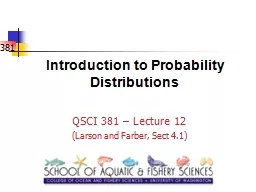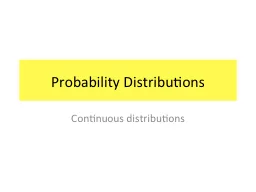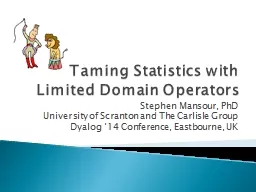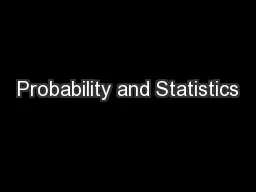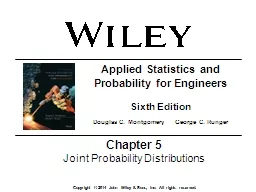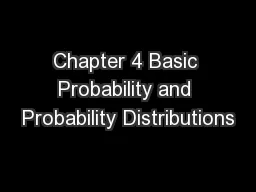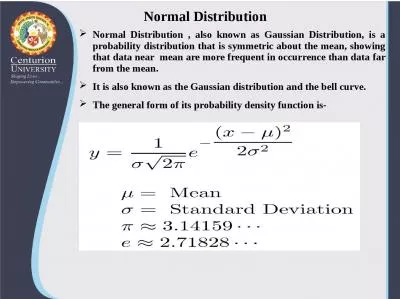PPT-Lecture 10 Probability Distributions
Author : jade | Published Date : 2023-10-04
John Rundle Econophysics PHYS 255 Probability Distributions Q Why should we care about probability distributions Why not just focus on the data A Outliers We want
Presentation Embed Code
Download Presentation
Download Presentation The PPT/PDF document "Lecture 10 Probability Distributions" is the property of its rightful owner. Permission is granted to download and print the materials on this website for personal, non-commercial use only, and to display it on your personal computer provided you do not modify the materials and that you retain all copyright notices contained in the materials. By downloading content from our website, you accept the terms of this agreement.
Lecture 10 Probability Distributions: Transcript
Download Rules Of Document
"Lecture 10 Probability Distributions"The content belongs to its owner. You may download and print it for personal use, without modification, and keep all copyright notices. By downloading, you agree to these terms.
Related Documents

